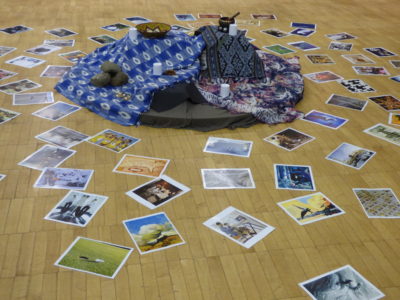Many of us who facilitate and host people in learning are asking questions, right? We give a fair amount of attention to the simplicity, the focus, the tone that will help a group. I think of the question as one of the key tools to help the group be in its own learning. And then it’s evolution. And then it’s experiments and the stuff it does.
Here’s six that I often use. I apply them to individuals, teams, and organizations. When asked to a group, I’m most often pointing to the possibility of shared, emergent understanding. But I start with individual perception.
- What has your attention? (In this team, in this project, in this organization, in this community, in this strategy.) The thought behind this is that if it has your attention, we might as well be deliberate in how we give it attention. And, we are meant to be noticers, all of us. I’d write it into every job description I can think of.
- What is it like to be you? (Again, in this team, project, etc. — chose your scale to match the setting. And feel some freedom to vary your scale. They all connect anyway.) I love it when people answer from this layer of subjective. “It’s like being a star in a band.” “It’s like being the forgotten stage hand.” Plenty has been written about the importance of teams and team work. Use this question as a way to witness the reality of each other — which is some really good team building.
- What is the most simple, clear, and honest statement you can say about what we are doing? This points to purpose. It points to clarity that needs some time to be messy. It points to a marker to show us where we are in often very complex environments. I love asking this one, particularly when it seems everything should be clear, but I know that it isn’t. It’s a call to people’s simplicity. Less big words that sound good. More honest from the gut, unpolished clarity.
- What is the bigger story that this work belongs to? More purpose. But this one encourages a glimpse from a more epic perspective. “This team is clarifying and simplifying the billing process — the bigger story is that we are supporting people everywhere to have access to skilled health professionals.” I’m not talking about making stuff up or exaggerating. It’s just that in today’s full-on, fast-paced, complex environments, it’s utterly useful to look up periodically and remember that there is more than just today’s focus. There is a sky.
- How is this situation evolving? (This team, this project, this community, this initiative, this understanding, this difficulty, etc.) I love seeding in the awareness, the memory that acts and perceptions of evolution are essential. It’s less “did you fully get it or not.” It’s more, “how can you see this changing and improving?” Our jobs are to participate in evolving the work, even the assembly line parts of the work.
- What one or two simple steps help now? Not thirty, though I get it that sometimes that is what we need. Very often, it’s just one or two that help move an individual or group from a paralysis of mass involvement to a small, but powerful momentum in support of well-purposed project or initiative.
Questions are tools. They come from curious dispositions, as much as from a gift with words. They come from people and groups that know that they haven’t got it all figured out. That we are figuring it out as we go.


